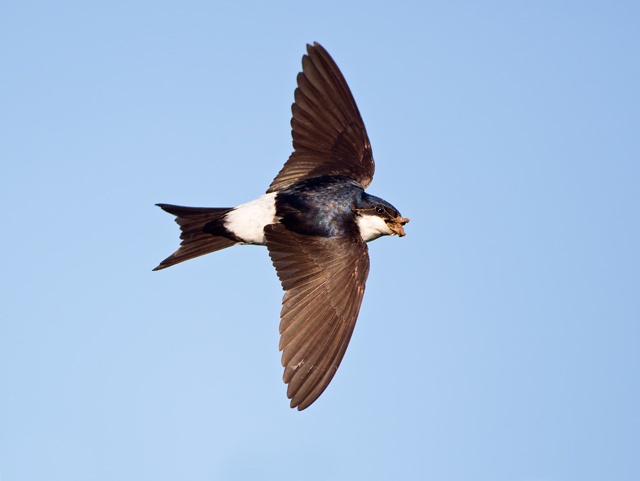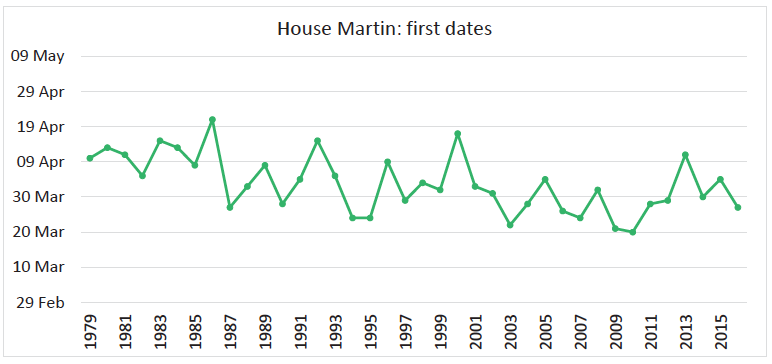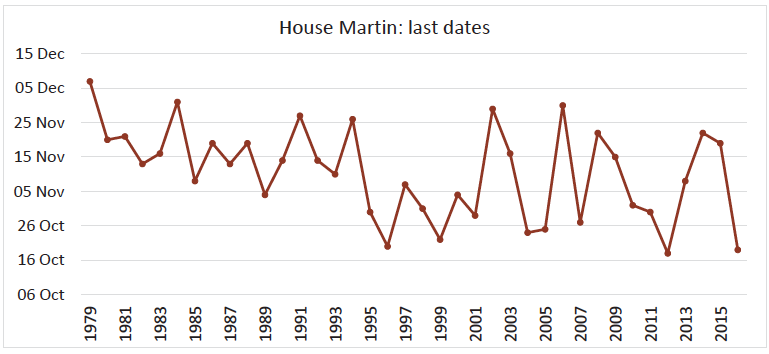House Martin Delichon urbicum

Who are these people who don't like House Martins breeding under their eaves? The cheerful chattering of these colonial nesters is one of the most enchanting sounds of a summer evening. They are heavily dependent on the right kind of overhanging eaves for nesting locations and in the late 1980s the Atlas estimated we had somewhere between 7,500-20,000 pairs of them - wide range of uncertainty! The Lincolnshire BBS index has an insufficient sample size to produce a long-term trend for the county but in England the population is down 40% over the period 1994-2019. The APEP4 adjusted population for 2016 was 11000 pairs indicating what many will have observed; though still very widespread the House Martin has declined. One can't help but feel that the mean-minded house holders who poke down nests and dangle deterrent ribbons from their eaves are a part of the problem.
The first House Martins in the county are often seen in late March but most arrive during April peaking between late April and mid-May. Most depart from late August into September when coastal migration gets underway in earnest. Gibraltar Point records most during September and peaks in 2017 for instance were 2,385 south on September 13th and another 2,460 south on September 20th. A similar late September peak occurred in 2016 when 3,500 went south on September 29th. In common with a number of declining trans-Saharan migrants, both arrival dates and departure dates of House Martin are getting earlier. First and last dates do not necessarily correlate with the timing of the bulk of arrival or departure, but they may well often reflect them. For House Martin, the changes have not been large, and there is much variation from year to year, but the trend over the 38-year period seems quite clear.
| Period | First spring date | Last autumn date |
| 1979-1997 | April 6th | November 15th |
| 1997-2016 | March 30th | November 5th |


Ringing data is fairly sparse for this species with just two foreign-ringed birds recovered in the county from The Netherlands in September 1974 and Belgium in June 2015. One local breeder first ringed in August 2012 at Haconby as an adult male has since been re-trapped there in three subsequent years. The last occasion was in August 2016 when at least five years old.
